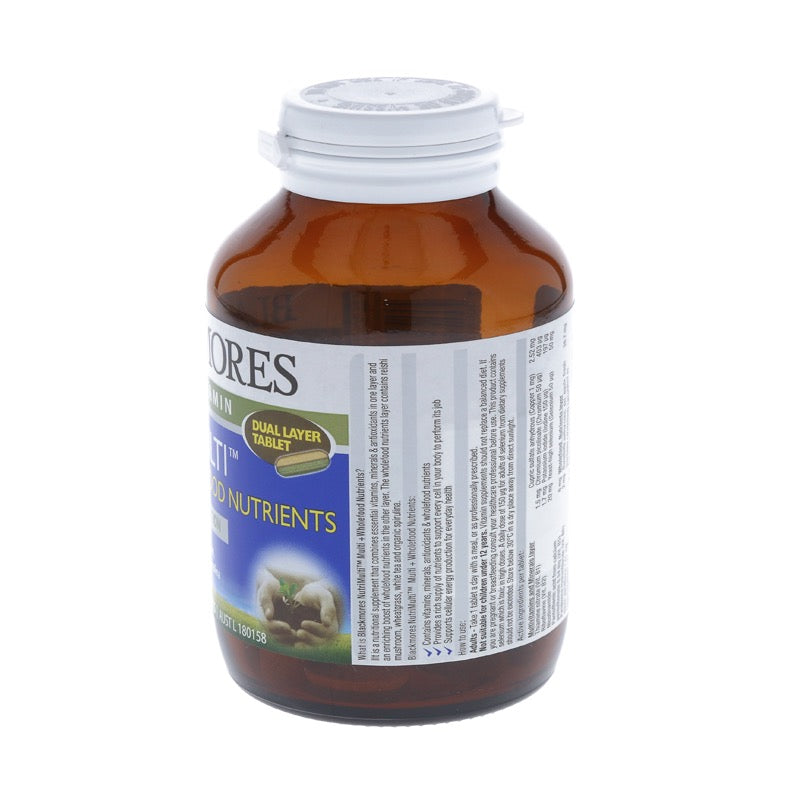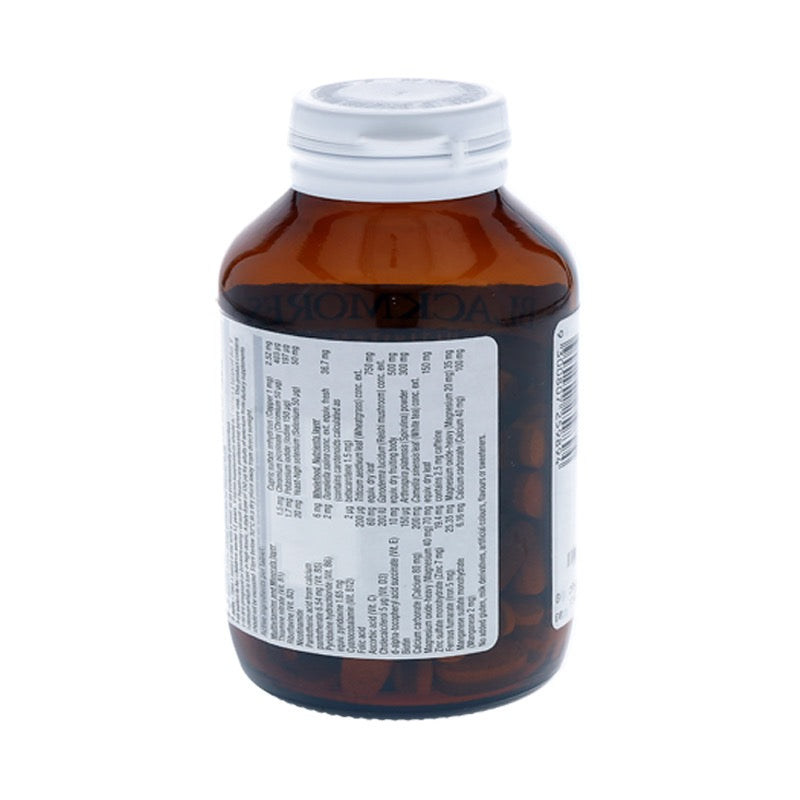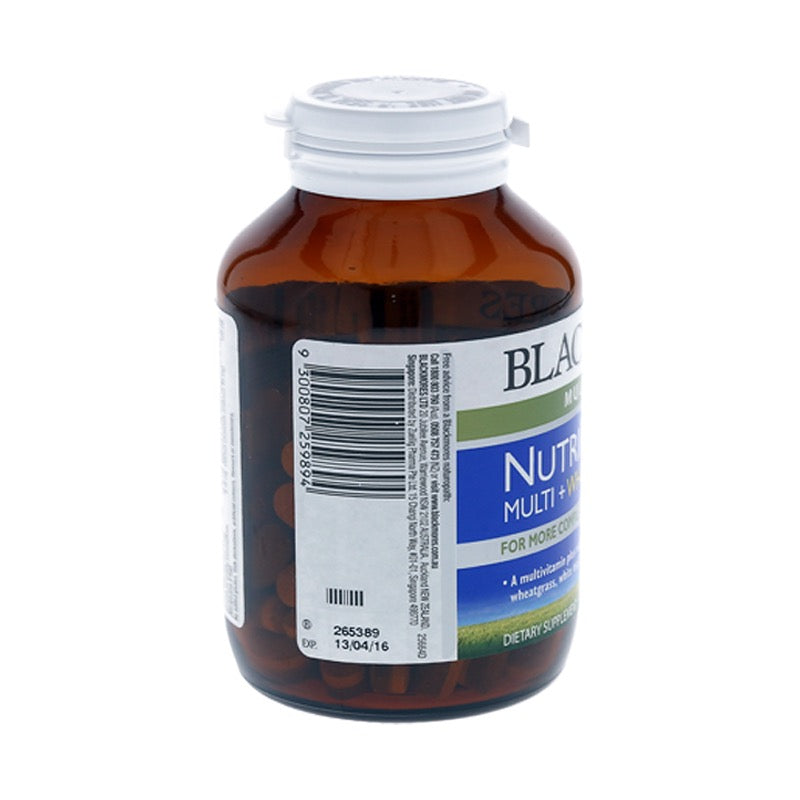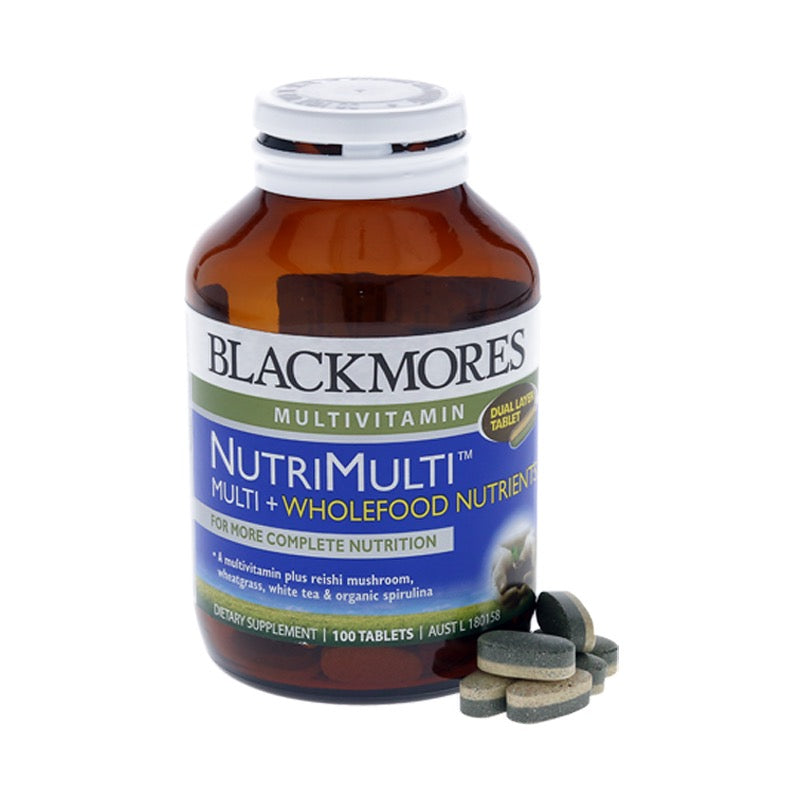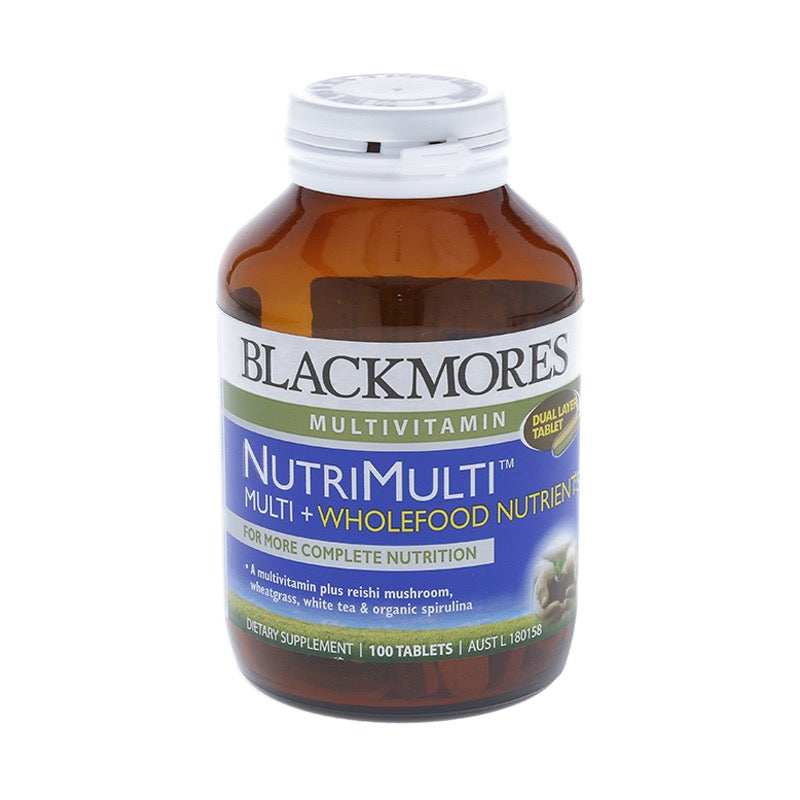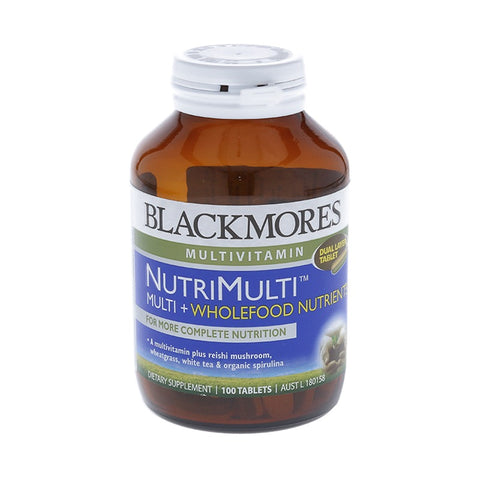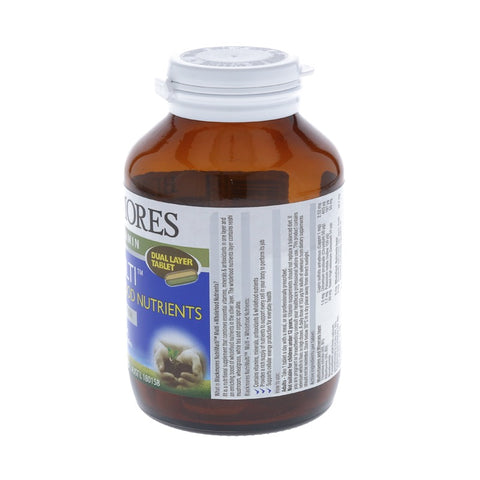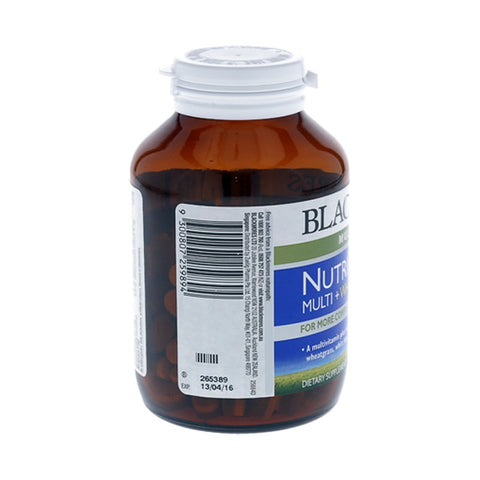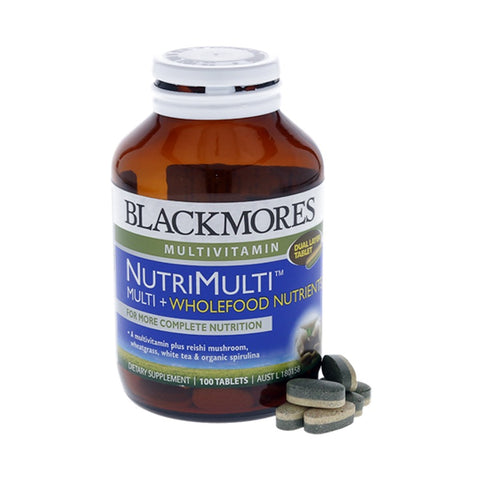
Product Detail
Wholefood is food eaten in or as near as possible to its natural state, with the minimum processing or cooking. Due to minimum processing or cooking, phytochemicals in wholefood are preserved.
Scientists have identified thousands of phytochemicals in plants, widely known examples of phytonutrients are the carotenoids, flavonoids, polyphenols, chlorophyll, indoles, lignans, terpenes, and isoflavones.
Phytochemicals are naturally occurring bioactive plant molecules or chemicals produced by plants to protect the plant from the elements of the earth, insect invasion and the solar radiation. They are found in fresh fruits and vegetables. The pytochemicals in the phytonutrients provide food resources for the cells in your body. Consumption of phytonutrients by humans is believed to protect our body from premature aging process and reduce the risk of many diseases such as cancer, heart disease, stroke, high blood pressure, cataracts, osteoporosis, diabetes and urinary tract infectio
Examples of foods rich in phytonutrients include: tomatoes, green tea, grapes, red cabbages, blueberries, raspberries, blackberries, spirulina, wheat grass, tea leaves, and reishi mushroom.
Spirulina are blue-green micro-algae that are a natural and rich source of nutrients, including vitamins, minerals, protein and phytonutrients (phycocyanin and chlorophyll). Spirulina is a rich source of carotenoids, especially betacarotene.
Wheat grass is a "green food" source of chlorophyll, vitamins, minerals, proteins and enzymes. Despite its name, wheatgrass is gluten free and can be used by people with gluten intolerance.
White tea leaves are picked before they open fully, when the buds are still covered in fine, white hairs, lending to the appearance of white tea. White tea is a rich source of polyphenols which have antioxidant and free radical scavenging properties.
Reishi mushroom (lingzhi) has been renowned in China for thousands of years. It is held in high regard in Asia. It has been shown to have immune-boosting effects and anti-inflammatory properties. The primary active ingredients in reishi mushroom are two phytochemicals known as beta-glucan polysaccharides and triterpenes.
Related Products
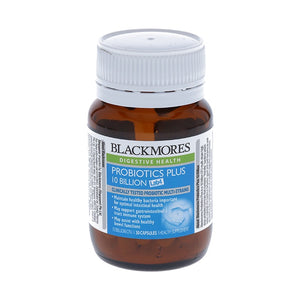
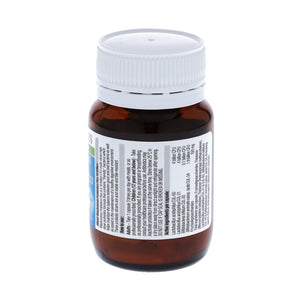
-
{"id":230111117336,"title":"Blackmores Probiotics Plus 10 Billion 30caps","handle":"blackmores-probiotics-plus-10-billion-30caps","description":"Blackmores Probiotic Plus 10 Billion contains probiotic flora called Lactobacillus and Bifidobacterium that tend to be the most commonly used flora in probiotic products.","published_at":"2017-11-30T16:52:21+08:00","created_at":"2017-11-30T16:52:21+08:00","vendor":"Blackmores","type":"","tags":[],"price":4500,"price_min":4500,"price_max":4500,"available":true,"price_varies":false,"compare_at_price":null,"compare_at_price_min":0,"compare_at_price_max":0,"compare_at_price_varies":false,"variants":[{"id":2447852208152,"title":"Default Title","option1":"Default Title","option2":null,"option3":null,"sku":"2005571","requires_shipping":true,"taxable":true,"featured_image":null,"available":true,"name":"Blackmores Probiotics Plus 10 Billion 30caps","public_title":null,"options":["Default Title"],"price":4500,"weight":109,"compare_at_price":null,"inventory_quantity":1,"inventory_management":null,"inventory_policy":"deny","barcode":"","requires_selling_plan":false,"selling_plan_allocations":[],"quantity_rule":{"min":1,"max":null,"increment":1}}],"images":["\/\/brydge-test-store.myshopify.com\/cdn\/shop\/products\/2005571_01.jpg?v=1512031941","\/\/brydge-test-store.myshopify.com\/cdn\/shop\/products\/2005571_02.jpg?v=1512031941","\/\/brydge-test-store.myshopify.com\/cdn\/shop\/products\/2005571_03.jpg?v=1512031941","\/\/brydge-test-store.myshopify.com\/cdn\/shop\/products\/2005571_04.jpg?v=1512031941"],"featured_image":"\/\/brydge-test-store.myshopify.com\/cdn\/shop\/products\/2005571_01.jpg?v=1512031941","options":["Title"],"media":[{"alt":null,"id":1425117773904,"position":1,"preview_image":{"aspect_ratio":1.0,"height":800,"width":800,"src":"\/\/brydge-test-store.myshopify.com\/cdn\/shop\/products\/2005571_01.jpg?v=1512031941"},"aspect_ratio":1.0,"height":800,"media_type":"image","src":"\/\/brydge-test-store.myshopify.com\/cdn\/shop\/products\/2005571_01.jpg?v=1512031941","width":800},{"alt":null,"id":1425117806672,"position":2,"preview_image":{"aspect_ratio":1.0,"height":800,"width":800,"src":"\/\/brydge-test-store.myshopify.com\/cdn\/shop\/products\/2005571_02.jpg?v=1512031941"},"aspect_ratio":1.0,"height":800,"media_type":"image","src":"\/\/brydge-test-store.myshopify.com\/cdn\/shop\/products\/2005571_02.jpg?v=1512031941","width":800},{"alt":null,"id":1425117839440,"position":3,"preview_image":{"aspect_ratio":1.0,"height":800,"width":800,"src":"\/\/brydge-test-store.myshopify.com\/cdn\/shop\/products\/2005571_03.jpg?v=1512031941"},"aspect_ratio":1.0,"height":800,"media_type":"image","src":"\/\/brydge-test-store.myshopify.com\/cdn\/shop\/products\/2005571_03.jpg?v=1512031941","width":800},{"alt":null,"id":1425117904976,"position":4,"preview_image":{"aspect_ratio":1.0,"height":800,"width":800,"src":"\/\/brydge-test-store.myshopify.com\/cdn\/shop\/products\/2005571_04.jpg?v=1512031941"},"aspect_ratio":1.0,"height":800,"media_type":"image","src":"\/\/brydge-test-store.myshopify.com\/cdn\/shop\/products\/2005571_04.jpg?v=1512031941","width":800}],"requires_selling_plan":false,"selling_plan_groups":[],"content":"Blackmores Probiotic Plus 10 Billion contains probiotic flora called Lactobacillus and Bifidobacterium that tend to be the most commonly used flora in probiotic products."}
$45.00
Blackmores Probiotic Plus 10 Billion contains probiotic flora called Lactobacillus and Bifidobacterium that tend to be the most commonly used flora in probiotic products.
Blackmores Probiotic Plus 10 Billion contains probiotic flora called Lactobacillus and Bifidobacterium that tend to be the most commonly used...
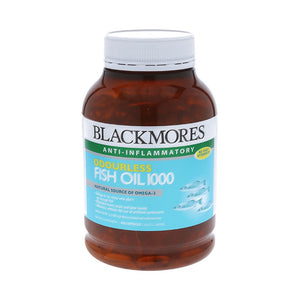
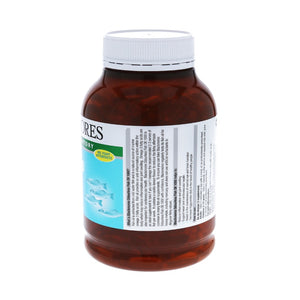
-
{"id":230110593048,"title":"Blackmores Odourless Fish Oil 1000 400caps","handle":"blackmores-odourless-fish-oil-1000-400caps","description":"Fish oil is a source of the omega-3 essential fatty acids. Essential fatty acids are incorporated into every cell membrane in the body, in the form of compounds called phospholipids. Cell membranes play the vital role of regulating what goes into, and what comes out of each cell. The integrity and fluidity of the cell membrane is determined by the type of phospholipid that is available for the body to use. Cell membranes made up mainly of phospholipids derived from the essential polyunsaturated fatty acids are more fluid and function better than cell membranes made up of saturated fat or trans- fatty acids. A cell membrane working at optimal levels retains vital nutrients and electrolytes, has the ability to communicate with other cells and is responsive to hormones.\r\nOmega-3 fatty acids are also important components of substances known as prostaglandins and leukotrienes. Prostaglandins and leukotrienes are important in immune function, smooth muscle function, platelet aggregation and inflammation. Fish oils have an anti-inflammatory action because prostaglandins and leukotrienes from omega-3 fatty acids have less inflammatory activity than prostaglandins and leukotrienes derived from other types of fatty acids. \r\nFish oils appear to alleviate the symptoms of rheumatoid arthritis due to the role of omega-3 fatty acids in suppression of the production of inflammatory compounds. \r\nFish oil inhibits triglyceride synthesis in the liver and so helps to lower fats (triglycerides) in blood, therefore supporting a healthy cardiovascular system.","published_at":"2017-11-30T16:51:06+08:00","created_at":"2017-11-30T16:51:06+08:00","vendor":"Blackmores","type":"","tags":[],"price":5250,"price_min":5250,"price_max":5250,"available":true,"price_varies":false,"compare_at_price":7500,"compare_at_price_min":7500,"compare_at_price_max":7500,"compare_at_price_varies":false,"variants":[{"id":2447825469464,"title":"Default Title","option1":"Default Title","option2":null,"option3":null,"sku":"2004462","requires_shipping":true,"taxable":true,"featured_image":null,"available":true,"name":"Blackmores Odourless Fish Oil 1000 400caps","public_title":null,"options":["Default Title"],"price":5250,"weight":666,"compare_at_price":7500,"inventory_quantity":1,"inventory_management":null,"inventory_policy":"deny","barcode":"","requires_selling_plan":false,"selling_plan_allocations":[],"quantity_rule":{"min":1,"max":null,"increment":1}}],"images":["\/\/brydge-test-store.myshopify.com\/cdn\/shop\/products\/2004462_01.jpg?v=1512031866","\/\/brydge-test-store.myshopify.com\/cdn\/shop\/products\/2004462_02.jpg?v=1512031866","\/\/brydge-test-store.myshopify.com\/cdn\/shop\/products\/2004462_03.jpg?v=1512031866","\/\/brydge-test-store.myshopify.com\/cdn\/shop\/products\/2004462_04.jpg?v=1512031866","\/\/brydge-test-store.myshopify.com\/cdn\/shop\/products\/2004462_05.jpg?v=1512031866","\/\/brydge-test-store.myshopify.com\/cdn\/shop\/products\/160915_fd20003_blackmores_1.jpg?v=1512031866"],"featured_image":"\/\/brydge-test-store.myshopify.com\/cdn\/shop\/products\/2004462_01.jpg?v=1512031866","options":["Title"],"media":[{"alt":null,"id":1425114660944,"position":1,"preview_image":{"aspect_ratio":1.0,"height":800,"width":800,"src":"\/\/brydge-test-store.myshopify.com\/cdn\/shop\/products\/2004462_01.jpg?v=1512031866"},"aspect_ratio":1.0,"height":800,"media_type":"image","src":"\/\/brydge-test-store.myshopify.com\/cdn\/shop\/products\/2004462_01.jpg?v=1512031866","width":800},{"alt":null,"id":1425114726480,"position":2,"preview_image":{"aspect_ratio":1.0,"height":800,"width":800,"src":"\/\/brydge-test-store.myshopify.com\/cdn\/shop\/products\/2004462_02.jpg?v=1512031866"},"aspect_ratio":1.0,"height":800,"media_type":"image","src":"\/\/brydge-test-store.myshopify.com\/cdn\/shop\/products\/2004462_02.jpg?v=1512031866","width":800},{"alt":null,"id":1425114824784,"position":3,"preview_image":{"aspect_ratio":1.0,"height":800,"width":800,"src":"\/\/brydge-test-store.myshopify.com\/cdn\/shop\/products\/2004462_03.jpg?v=1512031866"},"aspect_ratio":1.0,"height":800,"media_type":"image","src":"\/\/brydge-test-store.myshopify.com\/cdn\/shop\/products\/2004462_03.jpg?v=1512031866","width":800},{"alt":null,"id":1425114857552,"position":4,"preview_image":{"aspect_ratio":1.0,"height":800,"width":800,"src":"\/\/brydge-test-store.myshopify.com\/cdn\/shop\/products\/2004462_04.jpg?v=1512031866"},"aspect_ratio":1.0,"height":800,"media_type":"image","src":"\/\/brydge-test-store.myshopify.com\/cdn\/shop\/products\/2004462_04.jpg?v=1512031866","width":800},{"alt":null,"id":1425114890320,"position":5,"preview_image":{"aspect_ratio":1.0,"height":800,"width":800,"src":"\/\/brydge-test-store.myshopify.com\/cdn\/shop\/products\/2004462_05.jpg?v=1512031866"},"aspect_ratio":1.0,"height":800,"media_type":"image","src":"\/\/brydge-test-store.myshopify.com\/cdn\/shop\/products\/2004462_05.jpg?v=1512031866","width":800},{"alt":null,"id":1425114923088,"position":6,"preview_image":{"aspect_ratio":3.441,"height":340,"width":1170,"src":"\/\/brydge-test-store.myshopify.com\/cdn\/shop\/products\/160915_fd20003_blackmores_1.jpg?v=1512031866"},"aspect_ratio":3.441,"height":340,"media_type":"image","src":"\/\/brydge-test-store.myshopify.com\/cdn\/shop\/products\/160915_fd20003_blackmores_1.jpg?v=1512031866","width":1170}],"requires_selling_plan":false,"selling_plan_groups":[],"content":"Fish oil is a source of the omega-3 essential fatty acids. Essential fatty acids are incorporated into every cell membrane in the body, in the form of compounds called phospholipids. Cell membranes play the vital role of regulating what goes into, and what comes out of each cell. The integrity and fluidity of the cell membrane is determined by the type of phospholipid that is available for the body to use. Cell membranes made up mainly of phospholipids derived from the essential polyunsaturated fatty acids are more fluid and function better than cell membranes made up of saturated fat or trans- fatty acids. A cell membrane working at optimal levels retains vital nutrients and electrolytes, has the ability to communicate with other cells and is responsive to hormones.\r\nOmega-3 fatty acids are also important components of substances known as prostaglandins and leukotrienes. Prostaglandins and leukotrienes are important in immune function, smooth muscle function, platelet aggregation and inflammation. Fish oils have an anti-inflammatory action because prostaglandins and leukotrienes from omega-3 fatty acids have less inflammatory activity than prostaglandins and leukotrienes derived from other types of fatty acids. \r\nFish oils appear to alleviate the symptoms of rheumatoid arthritis due to the role of omega-3 fatty acids in suppression of the production of inflammatory compounds. \r\nFish oil inhibits triglyceride synthesis in the liver and so helps to lower fats (triglycerides) in blood, therefore supporting a healthy cardiovascular system."}
$52.50
$75.00
Fish oil is a source of the omega-3 essential fatty acids. Essential fatty acids are incorporated into every cell membrane in the body, in the form of compounds called phospholipids. Cell membranes play the vital role of regulating what goes into, and what comes out of each cell. The integrity and fluidity of the cell membrane is determined by the type of phospholipid that is available for the body to use. Cell membranes made up mainly of phospholipids derived from the essential polyunsaturated fatty acids are more fluid and function better than cell membranes made up of saturated fat or trans- fatty acids. A cell membrane working at optimal levels retains vital nutrients and electrolytes, has the ability to communicate with other cells and is responsive to hormones. Omega-3 fatty acids are also important components of substances known as prostaglandins and leukotrienes. Prostaglandins and leukotrienes are important in immune function,...
Fish oil is a source of the omega-3 essential fatty acids. Essential fatty acids are incorporated into every cell membrane...
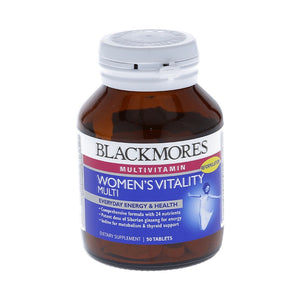
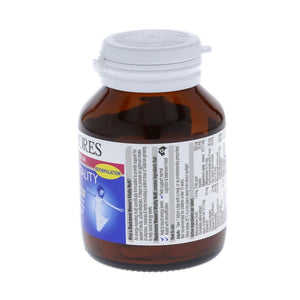
-
{"id":230111412248,"title":"Blackmores Womens Vitality Multi 50tabs","handle":"blackmores-womens-vitality-multi-50tabs","description":"Vitamins and minerals are involved in many biochemical processes in the body and as such have a part to play in the health of nearly every organ in the body. Siberian ginseng has been shown to improve physical and mental responses particularly where there is fatigue and low energy. It can help to restore and strengthen the immune response. Iodine is important for the normal functioning of the thyroid gland as it is an essential nutrient required for the synthesis of thyroid hormones. Thyroid hormones affect almost every cell in the body and regulate oxygen use, metabolic rate and cellular metabolism. Chromium, an essential nutrient for sugar metabolism, works closely with insulin to facilitate the uptake of glucose into cells. Physical activity and a diet high in refined sugars can increase the loss of chromium from the body. The B group vitamins play an essential role in the metabolic processes of all living cells by serving as coenzymes in the metabolism of carbohydrates, proteins and fats to produce energy. Also, the normal function and maintenance of the nervous system relies on the presence of the B group vitamins for the production of hormones and neurotransmitters. The nutrients betacarotene, vitamin C, vitamin E, zinc, manganese, copper and selenium have antioxidant properties that may reduce the risk of cell damage attributed to free radicals. Iron is essential for oxygen transport, for energy production and for a healthy immune system. Vitamin D is important for building and maintaining healthy bone mass, and in maintaining bone density. Milk thistle supports normal liver function and has a protective effect on cell membranes due to its strong antioxidant and free radical scavenging action. Traditionally used as a detoxifying agent, it supports regeneration of liver cells and protects against potentially harmful substances such as alcohol.","published_at":"2017-11-30T16:53:00+08:00","created_at":"2017-11-30T16:53:00+08:00","vendor":"Blackmores","type":"","tags":["50tabs","Energy","Tablets","Vitality"],"price":4200,"price_min":4200,"price_max":4200,"available":true,"price_varies":false,"compare_at_price":null,"compare_at_price_min":0,"compare_at_price_max":0,"compare_at_price_varies":false,"variants":[{"id":2447865413656,"title":"Default Title","option1":"Default Title","option2":null,"option3":null,"sku":"2004541","requires_shipping":true,"taxable":true,"featured_image":null,"available":true,"name":"Blackmores Womens Vitality Multi 50tabs","public_title":null,"options":["Default Title"],"price":4200,"weight":182,"compare_at_price":null,"inventory_quantity":1,"inventory_management":null,"inventory_policy":"deny","barcode":"","requires_selling_plan":false,"selling_plan_allocations":[],"quantity_rule":{"min":1,"max":null,"increment":1}}],"images":["\/\/brydge-test-store.myshopify.com\/cdn\/shop\/products\/2004541_01.jpg?v=1512031980","\/\/brydge-test-store.myshopify.com\/cdn\/shop\/products\/2004541_02.jpg?v=1512031980","\/\/brydge-test-store.myshopify.com\/cdn\/shop\/products\/2004541_03.jpg?v=1512031980","\/\/brydge-test-store.myshopify.com\/cdn\/shop\/products\/2004541_04.jpg?v=1512031980","\/\/brydge-test-store.myshopify.com\/cdn\/shop\/products\/2004541_05.jpg?v=1512031980"],"featured_image":"\/\/brydge-test-store.myshopify.com\/cdn\/shop\/products\/2004541_01.jpg?v=1512031980","options":["Title"],"media":[{"alt":null,"id":1425119805520,"position":1,"preview_image":{"aspect_ratio":1.0,"height":800,"width":800,"src":"\/\/brydge-test-store.myshopify.com\/cdn\/shop\/products\/2004541_01.jpg?v=1512031980"},"aspect_ratio":1.0,"height":800,"media_type":"image","src":"\/\/brydge-test-store.myshopify.com\/cdn\/shop\/products\/2004541_01.jpg?v=1512031980","width":800},{"alt":null,"id":1425119838288,"position":2,"preview_image":{"aspect_ratio":1.0,"height":800,"width":800,"src":"\/\/brydge-test-store.myshopify.com\/cdn\/shop\/products\/2004541_02.jpg?v=1512031980"},"aspect_ratio":1.0,"height":800,"media_type":"image","src":"\/\/brydge-test-store.myshopify.com\/cdn\/shop\/products\/2004541_02.jpg?v=1512031980","width":800},{"alt":null,"id":1425119871056,"position":3,"preview_image":{"aspect_ratio":1.0,"height":800,"width":800,"src":"\/\/brydge-test-store.myshopify.com\/cdn\/shop\/products\/2004541_03.jpg?v=1512031980"},"aspect_ratio":1.0,"height":800,"media_type":"image","src":"\/\/brydge-test-store.myshopify.com\/cdn\/shop\/products\/2004541_03.jpg?v=1512031980","width":800},{"alt":null,"id":1425119903824,"position":4,"preview_image":{"aspect_ratio":1.0,"height":800,"width":800,"src":"\/\/brydge-test-store.myshopify.com\/cdn\/shop\/products\/2004541_04.jpg?v=1512031980"},"aspect_ratio":1.0,"height":800,"media_type":"image","src":"\/\/brydge-test-store.myshopify.com\/cdn\/shop\/products\/2004541_04.jpg?v=1512031980","width":800},{"alt":null,"id":1425119969360,"position":5,"preview_image":{"aspect_ratio":1.0,"height":800,"width":800,"src":"\/\/brydge-test-store.myshopify.com\/cdn\/shop\/products\/2004541_05.jpg?v=1512031980"},"aspect_ratio":1.0,"height":800,"media_type":"image","src":"\/\/brydge-test-store.myshopify.com\/cdn\/shop\/products\/2004541_05.jpg?v=1512031980","width":800}],"requires_selling_plan":false,"selling_plan_groups":[],"content":"Vitamins and minerals are involved in many biochemical processes in the body and as such have a part to play in the health of nearly every organ in the body. Siberian ginseng has been shown to improve physical and mental responses particularly where there is fatigue and low energy. It can help to restore and strengthen the immune response. Iodine is important for the normal functioning of the thyroid gland as it is an essential nutrient required for the synthesis of thyroid hormones. Thyroid hormones affect almost every cell in the body and regulate oxygen use, metabolic rate and cellular metabolism. Chromium, an essential nutrient for sugar metabolism, works closely with insulin to facilitate the uptake of glucose into cells. Physical activity and a diet high in refined sugars can increase the loss of chromium from the body. The B group vitamins play an essential role in the metabolic processes of all living cells by serving as coenzymes in the metabolism of carbohydrates, proteins and fats to produce energy. Also, the normal function and maintenance of the nervous system relies on the presence of the B group vitamins for the production of hormones and neurotransmitters. The nutrients betacarotene, vitamin C, vitamin E, zinc, manganese, copper and selenium have antioxidant properties that may reduce the risk of cell damage attributed to free radicals. Iron is essential for oxygen transport, for energy production and for a healthy immune system. Vitamin D is important for building and maintaining healthy bone mass, and in maintaining bone density. Milk thistle supports normal liver function and has a protective effect on cell membranes due to its strong antioxidant and free radical scavenging action. Traditionally used as a detoxifying agent, it supports regeneration of liver cells and protects against potentially harmful substances such as alcohol."}
$42.00
Vitamins and minerals are involved in many biochemical processes in the body and as such have a part to play in the health of nearly every organ in the body. Siberian ginseng has been shown to improve physical and mental responses particularly where there is fatigue and low energy. It can help to restore and strengthen the immune response. Iodine is important for the normal functioning of the thyroid gland as it is an essential nutrient required for the synthesis of thyroid hormones. Thyroid hormones affect almost every cell in the body and regulate oxygen use, metabolic rate and cellular metabolism. Chromium, an essential nutrient for sugar metabolism, works closely with insulin to facilitate the uptake of glucose into cells. Physical activity and a diet high in refined sugars can increase the loss of chromium from the body. The B group vitamins play an essential role in the metabolic processes...
Vitamins and minerals are involved in many biochemical processes in the body and as such have a part to play...
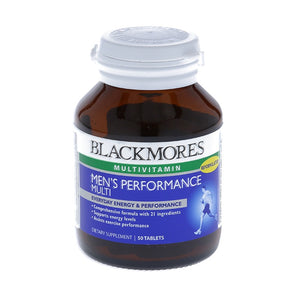
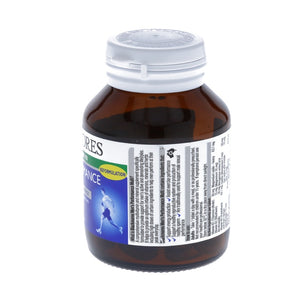
-
{"id":230110265368,"title":"Blackmores Men's Performance Multi 50tabs","handle":"blackmores-mens-performance-multi-50tabs","description":"Tribulus: the main benefit of tribulus is as a restorative which increases energy levels and stamina. It is particularly good for dealing with stress and nervous tension. It has a supportive effect on the reproductive system, enhancing libido and sexual function.\nZinc: supports exercise performance. Low zinc levels have been shown to impair exercise performance in men. Zinc also plays an essential role in male reproductive health and in the production of healthy sperm. Adequate levels of zinc are important for the proper functioning of the immune system.\nB group vitamins: play an essential role in the metabolic processes of all living cells by serving as coenzymes in the metabolism of carbohydrates, proteins and fats to produce energy. The B group support the normal function and maintenance of the nervous system and are beneficial in times of stress.\nDamiana: has traditionally been used for relief of stress and anxiety as it has a tonic effect on the nervous system, helping to increase a sense of wellbeing. It strengthens the male sexual system, improves stamina and assists with relief from anxiety related to sexual disturbances. Damiana has traditionally been used as an aphrodisiac. \nMilk thistle: supports normal liver function and has a protective effect on cell membranes due to its strong antioxidant and free radical scavenging action. Traditionally used as a detoxifying agent, it supports regeneration of liver cells and protects against potentially harmful substances such as alcohol. \nGinkgo: tones and helps to normalise peripheral circulation. It increases the fluidity of blood and has a vasodilating (relaxing) effect on blood vessels. Ginkgo has been used to relieve symptoms of sexual disturbances where poor circulation is a factor. \nVitamin C, vitamin E, zinc, manganese and selenium have antioxidant properties that may reduce the risk of cell damage attributed to free radicals.","published_at":"2017-11-30T16:50:14+08:00","created_at":"2017-11-30T16:50:14+08:00","vendor":"Blackmores","type":"","tags":[],"price":4200,"price_min":4200,"price_max":4200,"available":true,"price_varies":false,"compare_at_price":null,"compare_at_price_min":0,"compare_at_price_max":0,"compare_at_price_varies":false,"variants":[{"id":2447809019928,"title":"Default Title","option1":"Default Title","option2":null,"option3":null,"sku":"2004435","requires_shipping":true,"taxable":true,"featured_image":null,"available":true,"name":"Blackmores Men's Performance Multi 50tabs","public_title":null,"options":["Default Title"],"price":4200,"weight":175,"compare_at_price":null,"inventory_quantity":1,"inventory_management":null,"inventory_policy":"deny","barcode":"","requires_selling_plan":false,"selling_plan_allocations":[],"quantity_rule":{"min":1,"max":null,"increment":1}}],"images":["\/\/brydge-test-store.myshopify.com\/cdn\/shop\/products\/2004435_01.jpg?v=1512031814","\/\/brydge-test-store.myshopify.com\/cdn\/shop\/products\/2004435_02.jpg?v=1512031814","\/\/brydge-test-store.myshopify.com\/cdn\/shop\/products\/2004435_03.jpg?v=1512031814","\/\/brydge-test-store.myshopify.com\/cdn\/shop\/products\/2004435_04.jpg?v=1512031814","\/\/brydge-test-store.myshopify.com\/cdn\/shop\/products\/2004435_05.jpg?v=1512031814"],"featured_image":"\/\/brydge-test-store.myshopify.com\/cdn\/shop\/products\/2004435_01.jpg?v=1512031814","options":["Title"],"media":[{"alt":null,"id":1425112268880,"position":1,"preview_image":{"aspect_ratio":1.0,"height":800,"width":800,"src":"\/\/brydge-test-store.myshopify.com\/cdn\/shop\/products\/2004435_01.jpg?v=1512031814"},"aspect_ratio":1.0,"height":800,"media_type":"image","src":"\/\/brydge-test-store.myshopify.com\/cdn\/shop\/products\/2004435_01.jpg?v=1512031814","width":800},{"alt":null,"id":1425112301648,"position":2,"preview_image":{"aspect_ratio":1.0,"height":800,"width":800,"src":"\/\/brydge-test-store.myshopify.com\/cdn\/shop\/products\/2004435_02.jpg?v=1512031814"},"aspect_ratio":1.0,"height":800,"media_type":"image","src":"\/\/brydge-test-store.myshopify.com\/cdn\/shop\/products\/2004435_02.jpg?v=1512031814","width":800},{"alt":null,"id":1425112334416,"position":3,"preview_image":{"aspect_ratio":1.0,"height":800,"width":800,"src":"\/\/brydge-test-store.myshopify.com\/cdn\/shop\/products\/2004435_03.jpg?v=1512031814"},"aspect_ratio":1.0,"height":800,"media_type":"image","src":"\/\/brydge-test-store.myshopify.com\/cdn\/shop\/products\/2004435_03.jpg?v=1512031814","width":800},{"alt":null,"id":1425112367184,"position":4,"preview_image":{"aspect_ratio":1.0,"height":800,"width":800,"src":"\/\/brydge-test-store.myshopify.com\/cdn\/shop\/products\/2004435_04.jpg?v=1512031814"},"aspect_ratio":1.0,"height":800,"media_type":"image","src":"\/\/brydge-test-store.myshopify.com\/cdn\/shop\/products\/2004435_04.jpg?v=1512031814","width":800},{"alt":null,"id":1425112399952,"position":5,"preview_image":{"aspect_ratio":1.0,"height":800,"width":800,"src":"\/\/brydge-test-store.myshopify.com\/cdn\/shop\/products\/2004435_05.jpg?v=1512031814"},"aspect_ratio":1.0,"height":800,"media_type":"image","src":"\/\/brydge-test-store.myshopify.com\/cdn\/shop\/products\/2004435_05.jpg?v=1512031814","width":800}],"requires_selling_plan":false,"selling_plan_groups":[],"content":"Tribulus: the main benefit of tribulus is as a restorative which increases energy levels and stamina. It is particularly good for dealing with stress and nervous tension. It has a supportive effect on the reproductive system, enhancing libido and sexual function.\nZinc: supports exercise performance. Low zinc levels have been shown to impair exercise performance in men. Zinc also plays an essential role in male reproductive health and in the production of healthy sperm. Adequate levels of zinc are important for the proper functioning of the immune system.\nB group vitamins: play an essential role in the metabolic processes of all living cells by serving as coenzymes in the metabolism of carbohydrates, proteins and fats to produce energy. The B group support the normal function and maintenance of the nervous system and are beneficial in times of stress.\nDamiana: has traditionally been used for relief of stress and anxiety as it has a tonic effect on the nervous system, helping to increase a sense of wellbeing. It strengthens the male sexual system, improves stamina and assists with relief from anxiety related to sexual disturbances. Damiana has traditionally been used as an aphrodisiac. \nMilk thistle: supports normal liver function and has a protective effect on cell membranes due to its strong antioxidant and free radical scavenging action. Traditionally used as a detoxifying agent, it supports regeneration of liver cells and protects against potentially harmful substances such as alcohol. \nGinkgo: tones and helps to normalise peripheral circulation. It increases the fluidity of blood and has a vasodilating (relaxing) effect on blood vessels. Ginkgo has been used to relieve symptoms of sexual disturbances where poor circulation is a factor. \nVitamin C, vitamin E, zinc, manganese and selenium have antioxidant properties that may reduce the risk of cell damage attributed to free radicals."}
$42.00
Tribulus: the main benefit of tribulus is as a restorative which increases energy levels and stamina. It is particularly good for dealing with stress and nervous tension. It has a supportive effect on the reproductive system, enhancing libido and sexual function. Zinc: supports exercise performance. Low zinc levels have been shown to impair exercise performance in men. Zinc also plays an essential role in male reproductive health and in the production of healthy sperm. Adequate levels of zinc are important for the proper functioning of the immune system. B group vitamins: play an essential role in the metabolic processes of all living cells by serving as coenzymes in the metabolism of carbohydrates, proteins and fats to produce energy. The B group support the normal function and maintenance of the nervous system and are beneficial in times of stress. Damiana: has traditionally been used for relief of stress and anxiety as...
Tribulus: the main benefit of tribulus is as a restorative which increases energy levels and stamina. It is particularly good...
